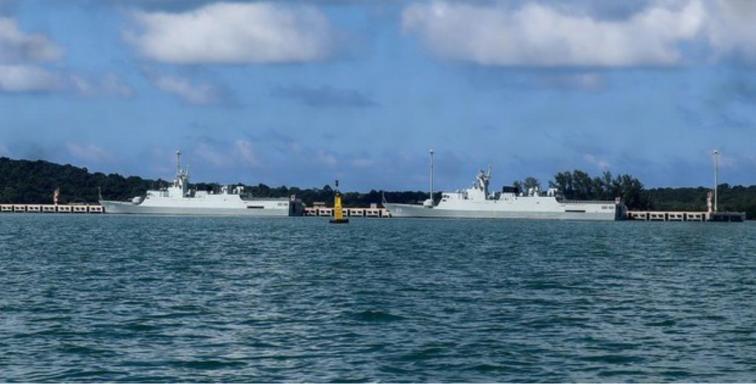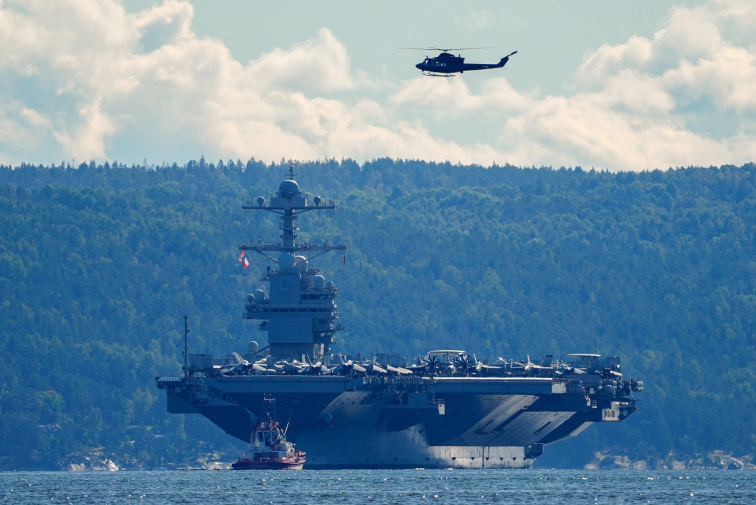On October 29, 2024, the U.S. Navy’s USS George Washington (CVN 73) participates in “Keen Sword 25” exercises in the western Pacific. (U.S. Navy)
[PeopleNews] Two former U.S. aircraft carrier officers recently told CNN that the Chinese Communist Party’s newest carrier, Fujian, possesses only about 60% of the combat capability of the U.S. Navy’s 50-year-old Nimitz-class carriers—representing a significant operational limitation.
According to SET News, China’s newest carrier, Fujian, is expected to be officially commissioned soon. Though touted as a major breakthrough for the People’s Liberation Army (PLA), former U.S. Navy Captain Carl Schuster said, “The Fujian’s operational capability is about 60% that of the Nimitz-class.” After examining deck photos of the Fujian, Schuster and retired Lieutenant Commander and former carrier pilot Keith Stewart concluded that the ship’s deck design restricts simultaneous aircraft takeoff and landing operations, thus slowing overall flight tempo.
Fujian’s Design Flaws and Operational Limits
The Fujian is equipped with China’s first-ever electromagnetic catapult system (EMALS), allowing aircraft to take off with more fuel and heavier payloads, extending their strike range. Until now, this technology has only been fielded by the U.S. Navy’s newest carrier, the USS Gerald R. Ford. China’s earlier carriers, the Liaoning and Shandong, still use ski-jump decks.
However, Schuster pointed out that the Fujian’s landing runway is angled only six degrees from the ship’s centerline, compared with nine degrees on U.S. carriers. Moreover, the landing area is longer and extends into the forward catapult zone, leaving little room for repositioning recovered aircraft. “The longer landing strip and smaller angle compress the available deck space for repositioning aircraft,” he said.
The two former officers also observed that the Fujian’s forward catapult appears to be longer than that of the Nimitz-class, increasing the risk of aircraft collisions on deck. To avoid accidents, operations would need to be slowed, further hindering sortie rates and combat tempo.
Carrier Operations: The CCP’s Weakest Experience Gap
According to The Epoch Times, Stewart stated that carrier operations remain one of the PLA’s weakest areas of experience. He believes it will take China a long time to catch up to the U.S. Navy. Especially with an advanced system like EMALS, operational proficiency can only be gained through repeated real-world exercises under diverse conditions.
“There’s an old Navy saying,” Stewart noted: “‘All carrier flight rules are written in blood,’ meaning many of them were learned through accidents causing serious injuries or deaths.”
“I’ve personally witnessed several deaths on carrier flight decks,” Stewart said. “I know how dangerous that environment is. Building a new carrier is hard enough, but I think China still faces many unknowns in carrier flight operations.”
He added: “Launching and recovering aircraft in calm daylight conditions is easy; the real challenge comes at night, in storms, when the deck pitches 18 feet with the waves, you’re low on fuel, and fear grips you. It’s a situation that can turn a pilot’s face white.”
Fujian vs. U.S. Carriers
CNN noted that the Fujian has a displacement of about 80,000 tons, making it China’s largest and closest in scale to the 97,000-ton U.S. Nimitz-class carriers. The Liaoning and Shandong displace only about 60,000–70,000 tons, and their ski-jump launch systems limit aircraft fuel and weapons loads.
The U.S. currently operates 11 active aircraft carriers, 10 of which are Nimitz-class. The oldest, the USS Nimitz, entered service in 1975, recently completed its final mission in the South China Sea, and is expected to retire next year. Satellite imagery shows the Fujian moored near Hainan Island in late September, with its commissioning ceremony likely imminent.
Meanwhile, Chinese state media and military commentator Zhang Jun-she claim that the Fujian’s successful sea trials demonstrate China’s world-class achievements in carrier and carrier-based aircraft technology, asserting that its electromagnetic launch technology has now “matured.” △










News magazine bootstrap themes!
I like this themes, fast loading and look profesional
Thank you Carlos!
You're welcome!
Please support me with give positive rating!
Yes Sure!